Article byIzzy Bartley
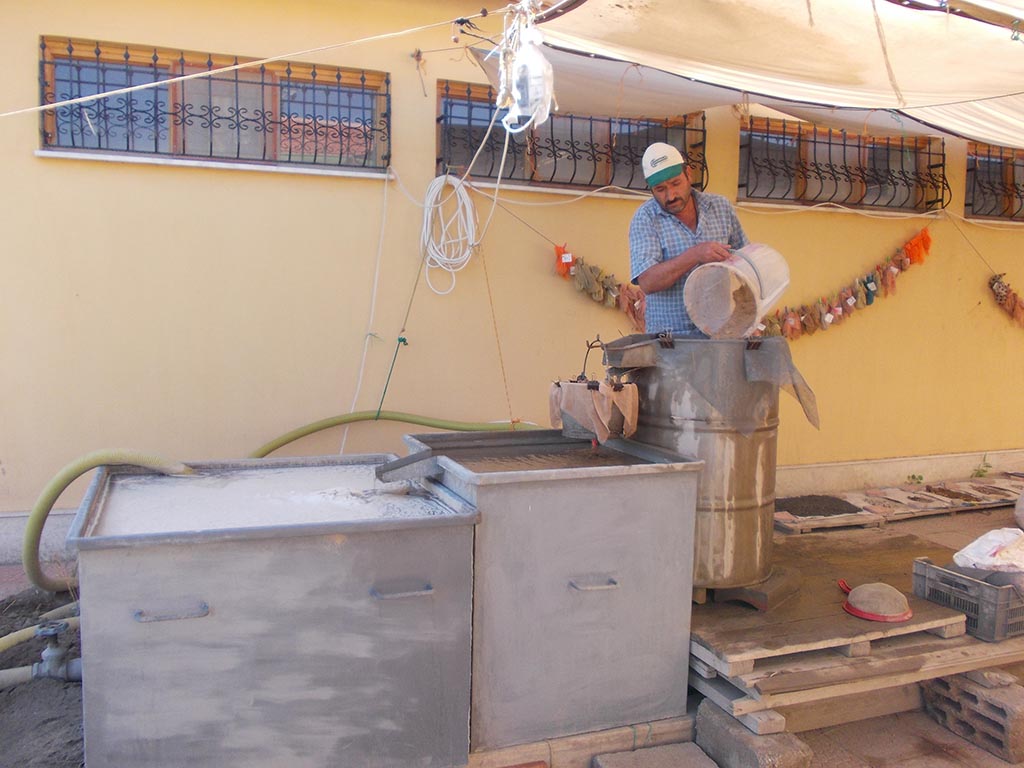
One of the unique aspects of the Ҫatalhöyük archaeological dig is the on-site presence of specialist laboratory staff and equipment. Every year during the dig season, a team of experts in human remains, animal remains, lithics (stone), clay and object conservation join the excavators in unravelling the web of 1500 years of occupation and activity at this Neolithic site. Unsurprisingly, it’s a pretty intensive process and this post will follow just a single strand of the research done at Ҫatalhöyük, that of archaeobotany, or the analysis of ancient plant remains.
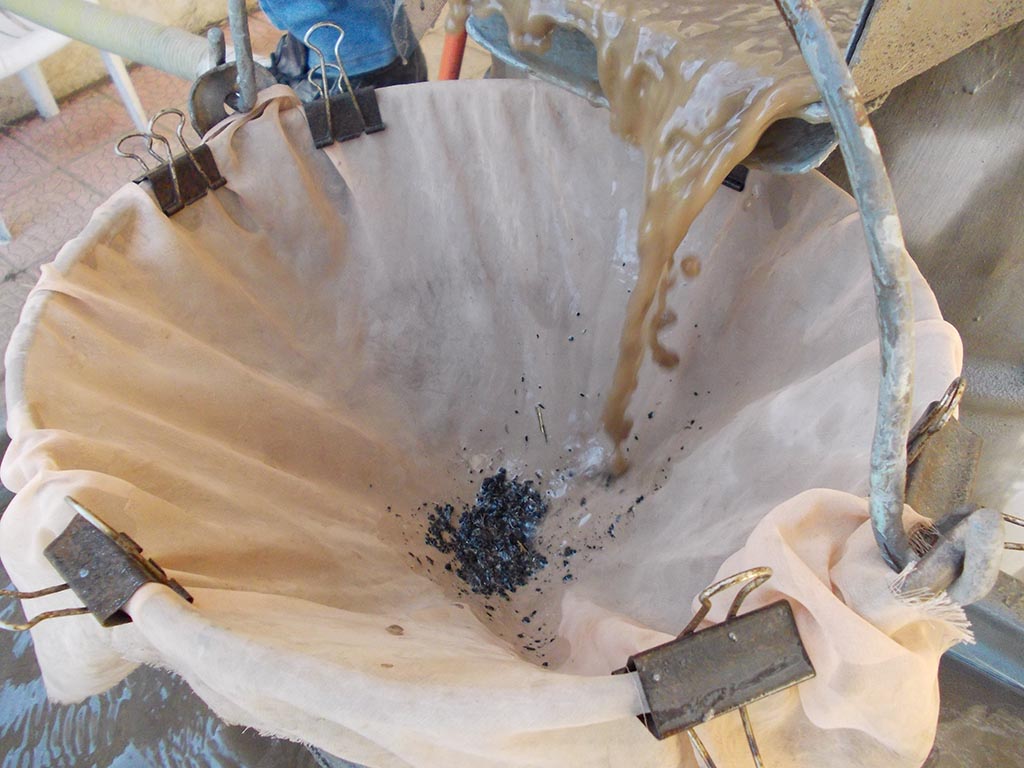
Approximately 40 litres of soil from each context (specific areas of the dig) are collected by the excavating archaeologists and sent down the mound for analysis in labs built on site. On arrival, each sample is carefully catalogued so that it can be traced back to the exact day and location and even the particular archaeologist who excavated it. The sample is then processed through flotation tanks.
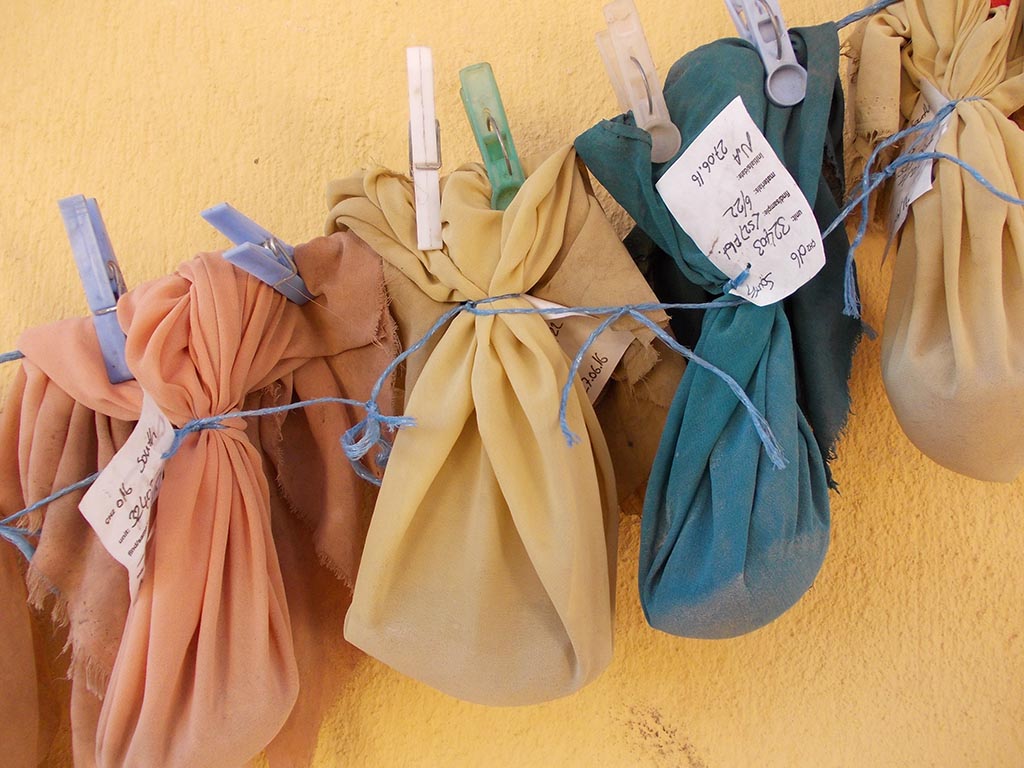
At Ҫatalhöyük, the flotation tanks consist of a large drum and two connected metal tanks, all containing water. A sample of soil is poured into the drum (figure 1). All the lighter material in the sample, including plant remains, floats up to the surface. A constant flow of water through the system propels this floating material over the edge of the drum and through a cloth sieve, trapping it (figure 2). The rest of the soil sample sinks to the bottom of the drum and is collected in a separate strainer and then removed and laid to dry before being sent to other labs for study. The two large tanks allow any residue to settle at the bottom, leaving clean water which can be recycled through the system using a pump. Once all the soil sample has been processed through the tank, the cloth strainer containing the plant material is tied into a pouch and hung up to dry (figure 3).
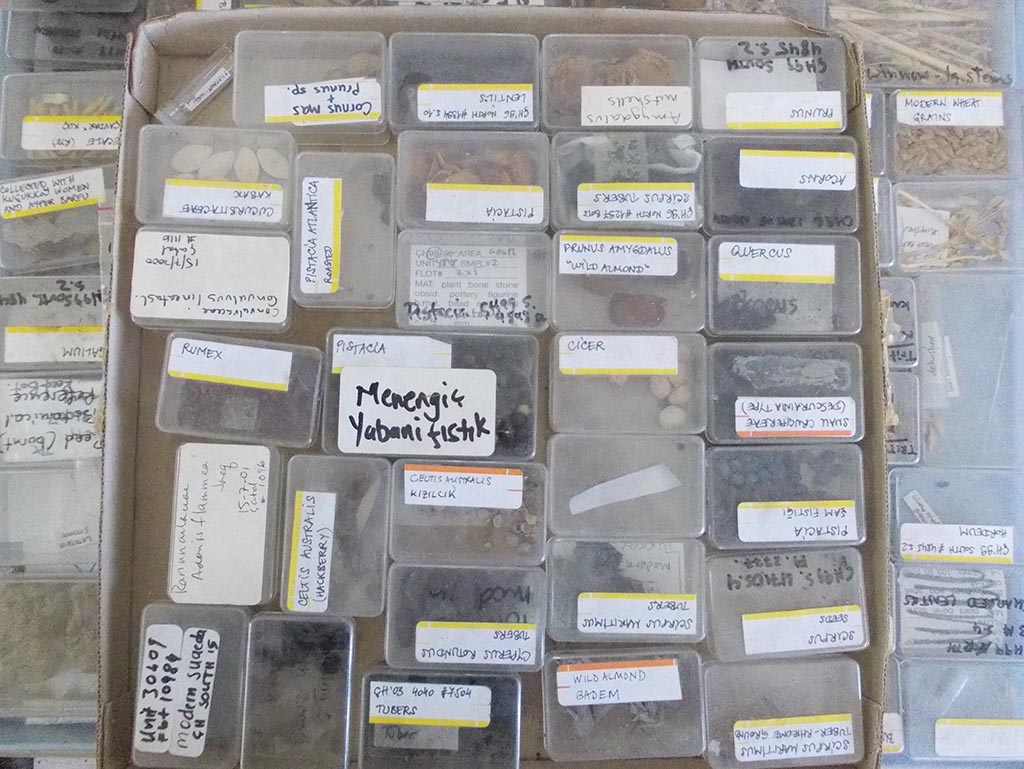
Now comes the technical laboratory work. Once dry, the full sample of plant material is sieved to grade it into four sizes. Any other material found, for example, bone fragments, is sent to other specialist labs for processing. The volume of each sieved sample of plant material is meticulously recorded before microscopes are used to identify the remains. Typical findings at Ҫatalhöyük include charcoal, acorns, tubers, carbonised nuts, dung pellets, mineralised fruit seeds, pulses, fragments of cereal chaff and ears of grain. An archive of reference material available in the lab is used to help with identification as needed (see figure 4).
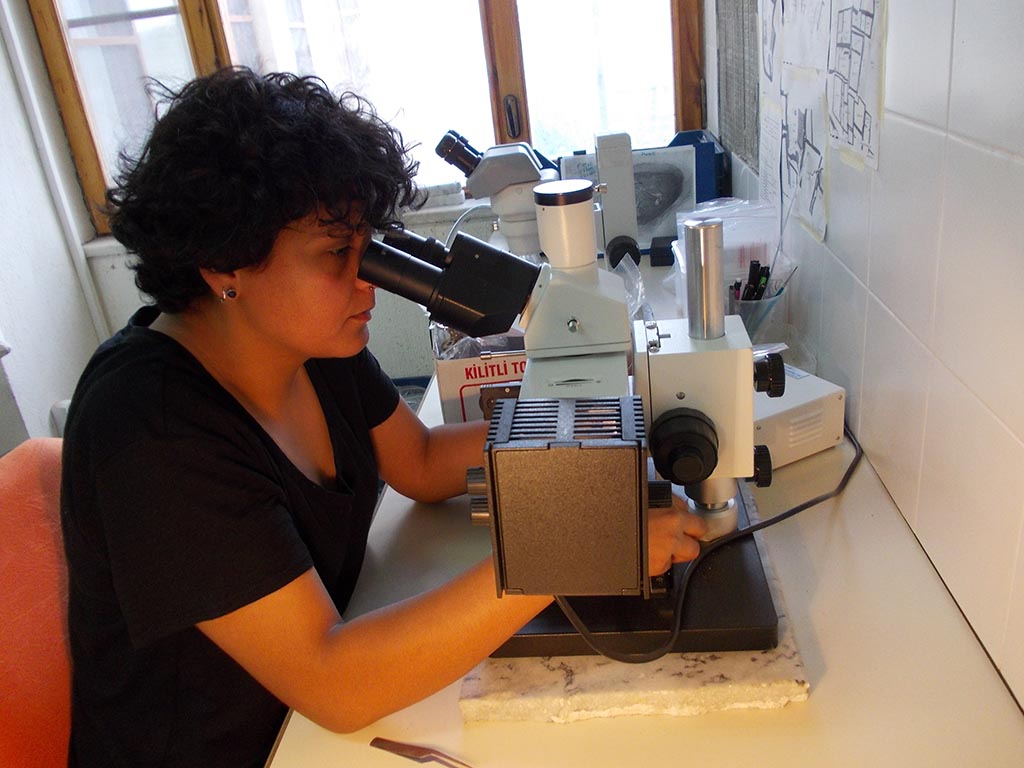
Ceren Kabukcu works as a charcoal specialist at Ҫatalhöyük and has a particular interest in the type and size of fuel that the Neolithic inhabitants of Ҫatalhöyük used to cook their food. Ceren slices samples of charcoal into sections and using a microscope, can identify the type of wood. Most common to this site is elm, oak and juniper. In addition to fuel wood, Ceren, alongside a large team of archaeobotanists, analyses the seeds found and they determine details such as whether they are from human food waste or animal dung.
Such detailed on-site analysis is unique to Ҫatalhöyük and the advantages are clear. Excavators and specialists work collaboratively, visiting the site together, talking with one another and seeing the locations of the excavated sample in-situ (i.e. where it was dug from).This reflexive work environment enables a much more holistic approach to the analysis, enabling highly detailed and very specific information to be related to activities taking place 9000 years ago.





